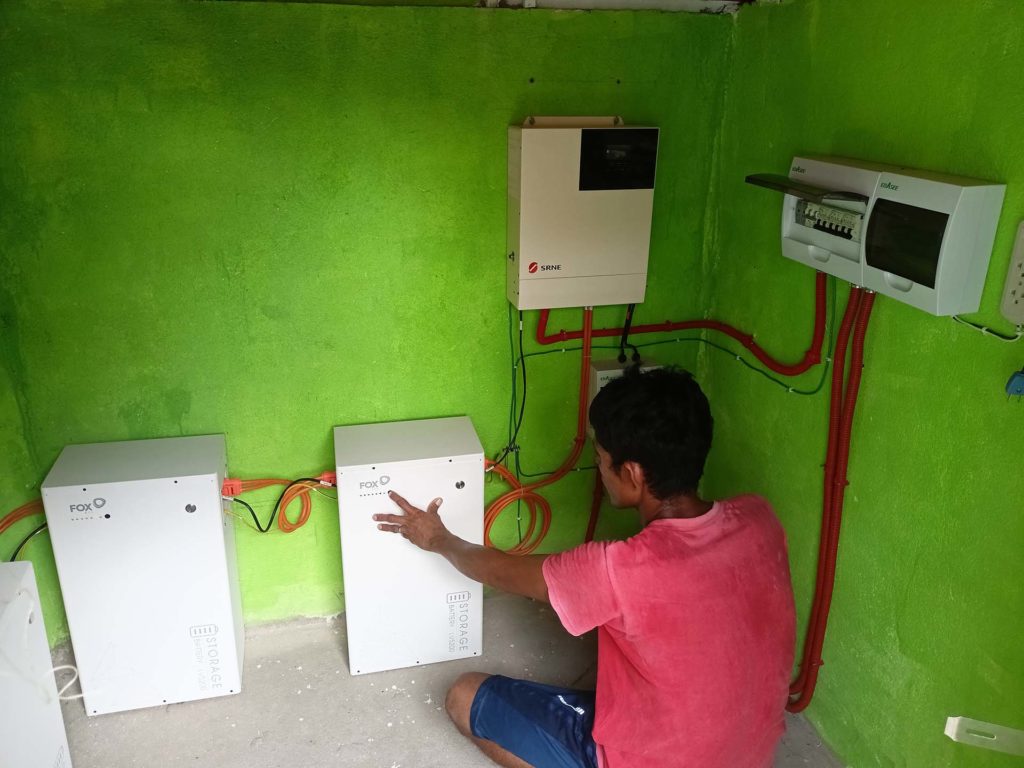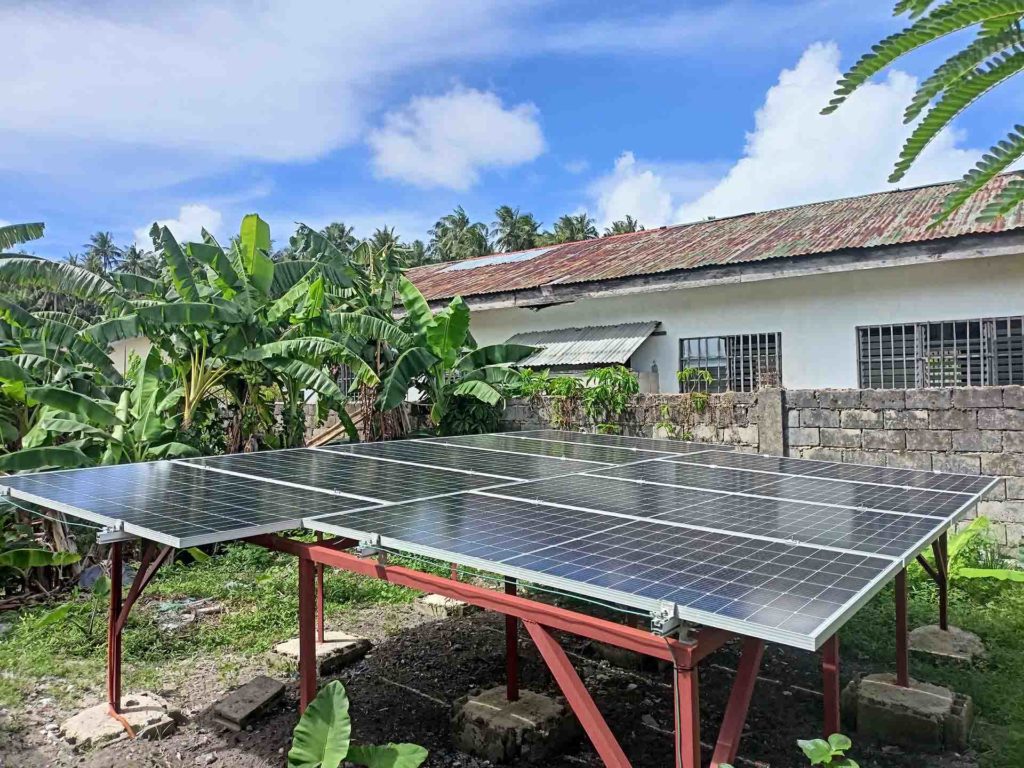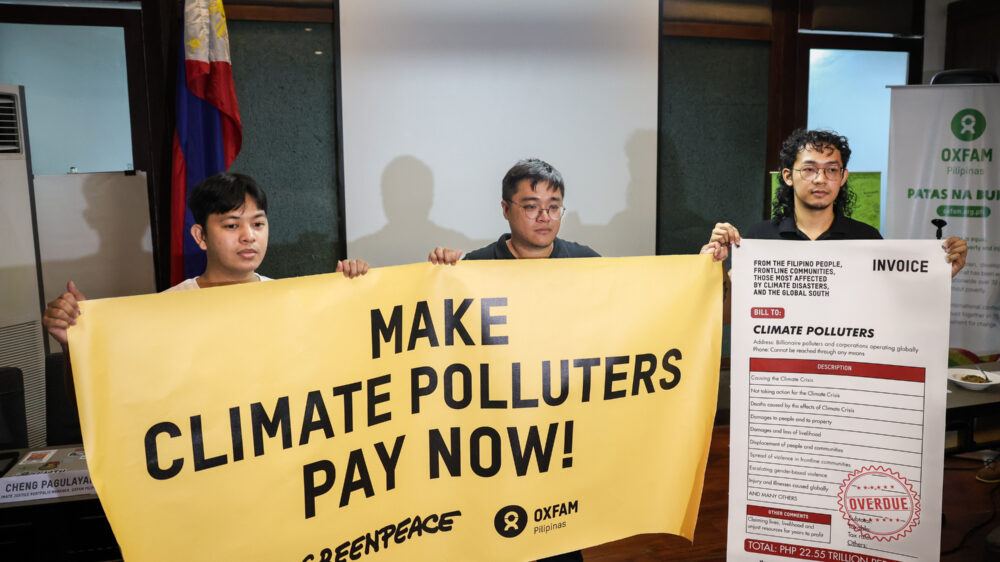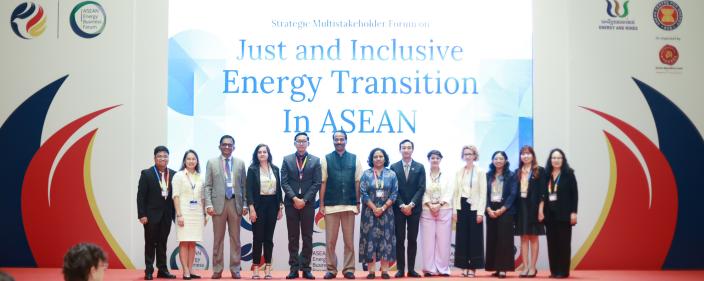
HILABAAN ISLAND, Eastern Samar – The dusk has just set in. The village is starting to get dark. And families are busy preparing for dinner.
As soon as she finishes cooking, Leona Bertumen, 55 years old, leaves her house and roams around the community in an alert mode with her eyes trained at specific houses.
“I am keeping an eye on some of our members who have violated our policies in the past. I hope they have changed and followed what we have agreed on,” she said. Leona is referring to the electricity use among its members.
Leona is the president of Hilabaan Women’s Association (HWA) which manages the solar-powered renewable energy (RE) system project that provides electricity to over 100 households on the island. HWA has a self-help group in charge of the day-to-day activities related to the project.
“Our [RE] system is not big. We can only allow each household up to 10 watts of electricity at any time. If we want to keep our system working for a long time, each member needs to be disciplined and follow our rules and regulations. Otherwise, we will revert to our dark times,” she says.
The system connects households within a one-kilometer radius of the powerhouse through a microgrid, while those on the fringes of the island are provided with a stand-alone solar home system. Electric consumers on the microgrid are allowed up to two units of five watts LED lights or 10 watts of use.
Energizing the island
The village of Hilabaan, a 223-hectare island situated seven kilometers from the mainland, is one of the two off-grid villages in Dolores, Eastern Samar. This island in the Pacific is prone to disasters as it is usually the first to be hit whenever a typhoon batters the province.
For many years, residents of the island have relied on household-based diesel-operated generators, small solar units, and batteries for their electricity. Households without electricity depend on kerosene lamps to provide light at night, limiting activities they can do once darkness sets.
In September 2021, Eastern Samar Electric Cooperative (ESAMELCO) announced the energization of the island via a diesel-run generator that provided electricity to 273 households for eight hours a day, from 3-11 pm. The energization is a project of the Small Power Utilities Group (SPUG) of the Department of Energy and National Power Corporation aimed at providing electricity to missionary areas in the country.
The microgrid solar-powered renewable energy system, on the other hand, started in February 2022, providing not less than eight hours of electricity to 124 households.
The renewable energy system is a project of Oxfam Pilipinas and its local partner Sentro para sa Ikauunlad ng Katutubong Agham at Teknolohiya (SIKAT) to serve as a working model of a sustainable power source in off-grid communities.

The project aims to lessen the community’s dependence on fossil fuel-powered generators and contribute to climate change mitigation. It also aims to provide women in the community, through the Hilabaan Women’s Association, with a social enterprise.
During the day, the powerhouse serves as a charging station for batteries and other devices, where clients pay a fee less than the prevailing rates at the town proper. This provides the women in the community an additional income on top of their share from the monthly dues of the consumers.
Aside from providing electricity to households, the project powers two street lights that also serve as navigational lights for fisherfolks, as well as electricity to the island’s evacuation center.
“The services that we offer meet the basic needs of the residents in our community,” she said.
Challenges in electrification
Like any project, there are challenges often encountered in its implementation. Since there are no individual electric meters that would monitor the energy usage of every household, some would often use electricity beyond the limited 10 watts.
Bertumen said she had monitored incidents such as a client connecting a videoke set, extending the connection to a neighbor, or charging devices to the system.
In such an incident, the client was issued a warning, but Bertumen said that after certain days, they would commit the same violation again. This prompts her to do the rounds every night to ensure that no illegal connection happens.
“If they keep on repeating this, we might as well disconnect them because the violations being done by the few affects the majority who religiously follow the right use of electricity.”
Eliza Minerva Borje, treasurer of the women’s group, says that at one time, electric service tripped off caused by the overloading of the system from the illegal connections.
Borje added that at one time, when a power interruption on the ESAMELCO line happened, one client was caught having an extension line to their neighbor.
Gil Tapon, the technician hired to maintain the system, said it is challenging to stop the illegal connection because they happen inside the house, and the owner may not allow the person conducting the monitoring inside.
“I consistently monitor the powerhouse usage to avoid overloading. The 63 households in the sitio using 10 watts each should only consume 630 watts. But there are times when usage goes up to over 1,000 watts or almost double what should have been their usage,” he said.
“If the electric consumers would like this system to last long and eventually expand, everybody must cooperate,” he added.
Despite these challenges, the community clearly benefits from the renewable energy system.
Bertumen said she is proud of the renewable energy project because it does not generate greenhouse gas emissions that contribute to global warming, and its operating hours are longer than the generator of ESAMELCO. It also does not need government funds to subsidize its operation, and gives women in the community an opportunity to run a social enterprise and manage their own energy system.
The beauty with solar-powered RE system is that a consumer can have 24 hours electricity, you do not need fuel or gasoline but only energy from the sun. This is the kind of energy system that should be promoted, especially at this time when prices of gasoline continue to increase.
Gil Tapon



